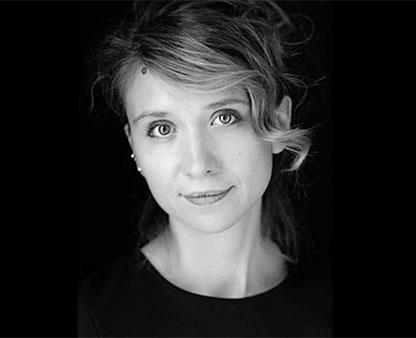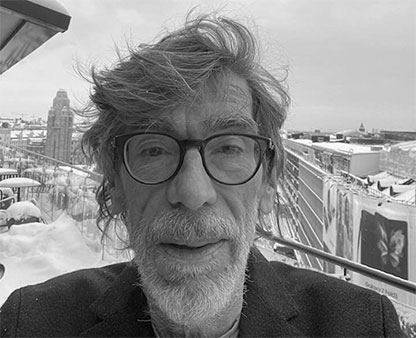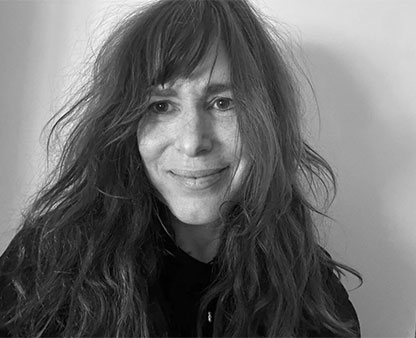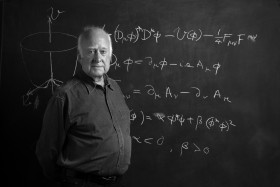Filmen rummer et vigtigt sted 30 minutter inde den mest gribende scene, jeg mindes at have set i en tv-dokumentar. Den er en ægte og helt igennem autentisk filmscene. Den varer vel næsten fem minutter, og er netop så lang, den er, fordi den skildrer en vanskelig telefonsamtale, og en sådan tøver, som vi ved, med at slutte, for ingen ved, hvordan man gør. Scenen fortsætter, så den kan vise mig hvor smukt, det kan ske. Fortsætter til sin egen afslutning. Samtalen er den alvorligste en læge og en patient kan have. Når begge, patienten og lægen, er tømte for ord, naturligt færdige, trætte, vokser pauserne og bliver ligesom af sig selv til en slutning. Det er meget smukt, for sådan ved jeg naturligvis, det er i den virkelige virkelighed.
Patienten deltager i forsøget på Herlev Sygehus med t-celle behandling. Det var først gået så godt, men nu efter den seneste scanning opfylder hun ikke kriterierne for at fortsætte. Hun er opgivet, det er hvad lægen, uden direkte at sige det sådan, må meddele i denne telefonsamtale. Patienten argumenterer med lægen, hun gør det afdæmpet klogt. Både på et intellektuelt niveau og på et følelsesmæssigt niveau. Hele samtalen hører jeg på filmens lydside. Jeg er hos lægen og kigger hende over skulderen, mens hun sidder ved sit skrivebord og tager den samtale, som hun på forhånd har aftalt med patienten, som bor i Thy. Det er alt sammen meget, meget opmærksomt registreret af Henrik Bohn Ipsens kamera. Det er filmens centrum og handlingens overraskende omdrejningspunkt. Sådan har klipperen Steen Johannessen klogt ordnet det.
Louise Detlefsen har lavet en interessant produktionsbeskrivelse, hvor hun skriver om filmens idé: ”Først mødte vi den erfarne kræftlæge Benny Vittrup Jensen, der som overlæge ved Enhed for Eksperimentel Behandling på Herlev Hospital, talte med os om tro, håb og kærlighed i arbejdet med de uhelbredeligt syge patienter. I en periode på nogle måneder fik vi lov at sidde med i hans konsultation på 17. etage, hvor patienter, der ikke har flere behandlingsmuligheder kommer for at medvirke i medicinske forsøg, i håbet om det kan forlænge eller redde deres liv. Efter at have fulgt Benny Vittrup Jensen havnede vi nogle etager længere nede på Herlev Hospital, hvor Center for Cancer Immunterapi holder til. Her oplevede vi, at der foregik noget nær et mirakel…”
“I al stilfærdighed var den ansete professor i klinisk immun terapi Inge Marie Svane sammen med et hold af yngre læger i gang med at afprøve en helt ny form for kræftbehandling. I vores øre lød det for godt til at være sandt: Lægerne opererede en kræftknude ud, tog nogle særlige immunceller ud, dyrkede dem i laboratoriet så de delte sig til milliarder og så fik patienten sine egne immunceller tilbage i kroppen. Her kunne de så i månedsvis bagefter helt af sig selv gnaskede kræftcellerne i sig. Så kræften skrumpede ind eller sågar helt forsvandt. Døende patienter kunne blive helbredt.
Det lød så enkelt, at selv vi forstod det. Og det lød ikke bare forståeligt, men også som første skridt hen imod en kur mod kræft. At Herlev Hospital til og med var det første sted i Europa, hvor denne nye metode blev afprøvet på mennesker, gjorde det endnu mere spændende for os…”
Jeg kan godt lide den film, ja, jeg er meget optaget af den film. Jeg har måske enkelte indvendinger. Vistnok. Men det har mindre betydning. Det vigtige er, at filmen er lavet. Den leverer en ren og ordentlig og afdæmpet beskrivelse af kræftlæge og kræftpatient på fælles hårdt arbejde. (At det stik modsatte billede af patient læge relationen andre steder i andre situationer både kan tegnes og er blevet tegnet, ved mange – bestemt også jeg.) Men her er jeg i den klassiske oplysende dokumentarfilms verden. Disse film skildrer opbyggeligt vore samfunds vitale funktioner. De skal bruges til folkeoplysning, og de var fra deres begyndelse ikke kritiske (blev det efterhånden ind imellem), og i dag er en film som Forsøget i sin art og kvalitet ikke så almindelig. Den er en gammeldags film på den fine måde. En tv-dokumentar med information og oplysning som formål og indhold i en filmisk form, hvor samtale og interview veksler med reportage med ren og behersket journalistisk holdning.
Danmark 2014, 56 min. TV2 på torsdag 23. oktober 20:50
http://www.dfi.dk/faktaomfilm/film/da/85454.aspx?id=85454
LOUISE DETLEFSEN
Fra Barbie til Babe (2003), Min bedste lærer (2006), Klara – livvagtens datter (2008), Jakob – Revisorens søn (2008), Christas mareridt (2010), Mig og mine forældre, Sådan er kvinder, Et forbandet år (2012), Lovebirds (2014) 7,9,13 (2014) Forsøget (2014)
LOUISE UNMARK KJELDSEN
Min bedste lærer (2006), Sådan er kvinder, Et forbandet år (2012), Store piger græder ikke, De sårede, Selvoptaget



